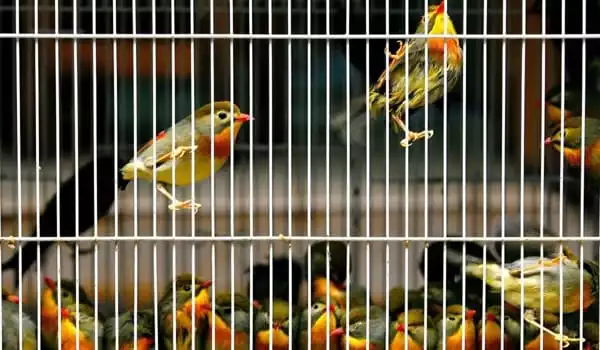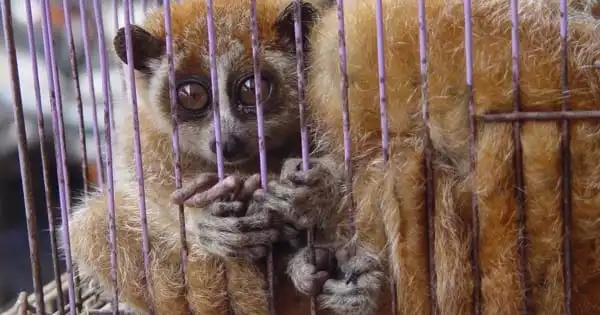Illegal or unsustainable wildlife trade has a negative impact on biodiversity, ecosystem services, people’s livelihoods, and economies all over the world. Experts from around the world warn of the dangers associated with this activity and outline a strategy for slowing its growth.
Plants, animals, fungi, microorganisms, and their derivatives are traded all over the world for a variety of purposes including food, medicine, ornament, fashion, and furniture. They can also be traded live in zoos, aquariums, and botanical gardens for pets, research, or exhibitions. Wildlife can also serve various social and economic functions for local communities, be harvested and consumed locally, or be transported through a complex multinational trade chain.
“When most people think of wildlife trade, they think of ivory smuggling or the trade in wild pets. However, the wildlife trade is more prevalent in our daily lives than most people realize. For example, the wood used to make the table where your family is having dinner may have come from the wildlife trade” – Caroline Fukushima, researcher at the University of Helsinki’s Finnish Museum of Natural History (Luomus), agrees.
The trade affects also other species, including us. Wildlife trade can be legal, illegal, or unregulated, sustainable, or unsustainable.
When most people think of wildlife trade, they think of ivory smuggling or the trade in wild pets. However, the wildlife trade is more prevalent in our daily lives than most people realize.
Caroline Fukushima
“People should be aware, however, that legally trading does not always imply ‘sustainably produced or traded.’ Illegal or unsustainable wildlife trade (IUWT) is one of the five major global drivers of biodiversity loss and extinction “Fukushima declares.
Aside from the target species, IUWT frequently affects species with which they interact in their native or introduced range. Finally, the illegal and unsustainable wildlife trade has an impact on the ecosystem services that other species, including our own, rely on. Other species are frequently the primary losers in the process, even if this goes largely unnoticed.
“Invasive alien species, zoonotic diseases, connections with corruption and crime networks, negative repercussions on the local and global economy, and promotion of social, economic, and environmental injustice are just a few of the many negative consequences of poorly managed and regulated wildlife trade,” says Pedro Cardoso, another researcher from Luomus and one of the publications’ lead authors.

Cooperation is urgently needed
An international coalition of conservation biologists, activists, enforcers, practitioners, and other actors has expanded on the Alliance of World Scientists’ manifesto “World Scientists’ Warning to Humanity.” The group’s goal is to examine illegal and unsustainable wildlife trade and raise awareness about how it can harm our own well-being.
The group discusses the challenges that must be overcome when combating illegal and unsustainable wildlife trade and proposes some solutions. They also emphasize the critical need for increased collaboration among actors and disciplines to mitigate its negative consequences.
“Understanding the cultural roots and drivers of wildlife consumption, as well as taking into account its cultural and social nuances,” says Caroline Fukushima, “is essential for developing conservation strategies that are more likely to succeed.”
The authors emphasize the importance of measuring the scope, scale, and impact of wildlife trade on all biodiversity. Strategies to combat IUWT rely on accurate and reliable biodiversity knowledge generated by scientists and other experts, including citizen scientists and conservationists working alongside local communities and international and local non-governmental organizations (NGOs) (non-governmental organizations).
To combat illegal and unsustainable wildlife trade, various disciplines such as sociology, economics, criminology, social marketing, and computer science must be involved. Its human dimension must be taken into account at all stages of conservation action.
Many technologies and tools are already available for analyzing, tracing, monitoring, and reducing unsustainable and illegal wildlife trade. However, its rise demonstrates that simply enforcing the law is insufficient to deter such behavior. Education is the most important factor in changing consumer behavior. Everyone should get involved in the fight against unsustainable or illegal wildlife trade.
What are the risks of illegal or unsustainable wildlife trade (IUWT)?
- It is one of the primary causes of extinction. Species extinction can have a domino effect on other dependent species and their ecosystems.
- It facilitates the spread of invasive species from other regions, as well as the diseases they may carry. It enables outbreaks of zoonotic and vector-borne diseases that can lead to global pandemics by supplying live animal markets.
- IUWT, including illegal logging, has an impact on climate regulation, crop pollination, and other ecosystem services. The global economy can be harmed by IUWT and related criminal activities such as tax evasion and money laundering.
- Wildlife trafficking is heavily facilitated by criminal networks, which fuels corruption in range, transit, and consumer states. It has the potential to have an impact on the economies of local communities that rely on wildlife or the ecosystem services that wildlife provides.
What should we do to reduce or eliminate illegal or unsustainable wildlife trade?
As a conservationist, a policy maker, or an enforcement officer:
- Ensure the trade’s long-term viability. Understand the cultural and social aspects of wildlife demand, and devise nuanced strategies to reduce IUWT.
- Listen to, engage with, and support local communities that rely on wildlife trade leadership. Request improved regulation and oversight of online wildlife commerce.
- Ensure that your country’s legislation protects wildlife from IUWT. Encourage scientific research and use it to guide conservation actions and policies.
- Make technologies and other resources to curb illegal wildlife trade accessible to all. Create an international network of professionals with expertise in related fields including biology, forensics, and trade regulation.
As a consumer:
- Select products that are sustainably sourced and legally obtained, and promote initiatives that aim to ensure that trade is sustainable. Demand political will and funding for initiatives that will help to reduce IUWT.
- Raise awareness about IUWT and reduce or change wildlife consumption habits that are detrimental to biodiversity. Don’t buy illegal/unsustainable wildlife or its products, whether in markets, tourist attractions, online, or anywhere else.
- Think twice about liking or sharing social media posts that depict unnatural human-wildlife interactions. Don’t support tourist attractions or volunteer opportunities that allow people to interact with wildlife.





